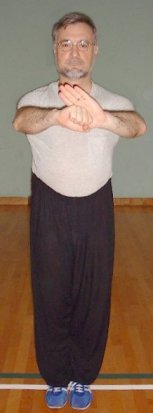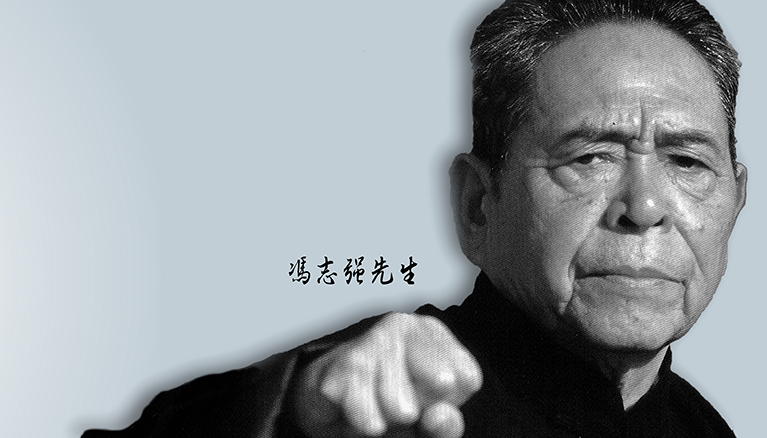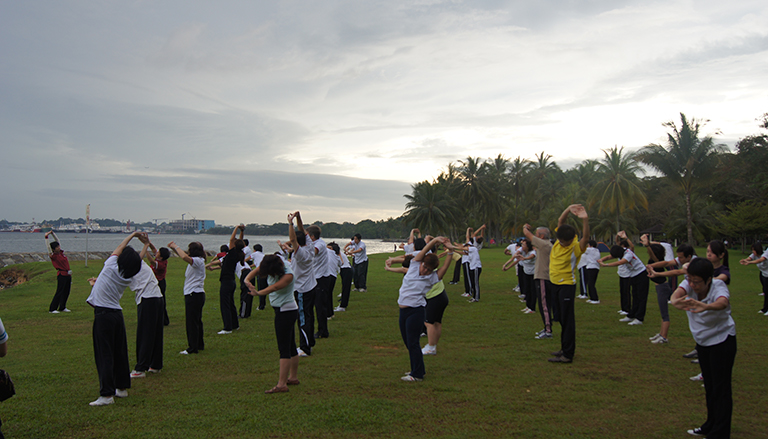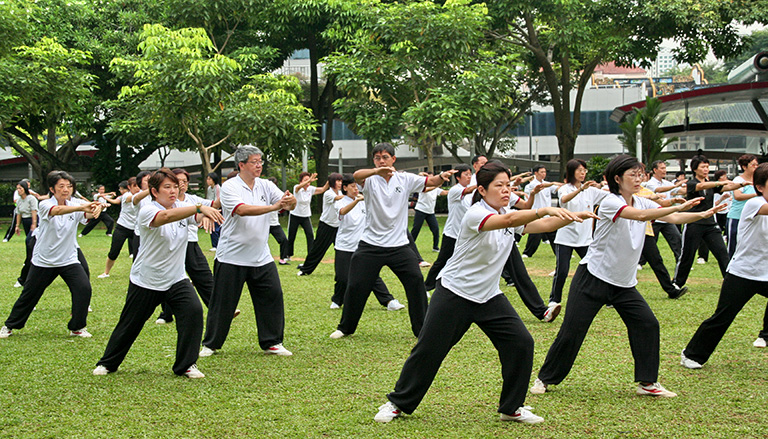Wushu Greeting of Respect
BY BARRY STEBEN JUL 21 2007

In Taiji quan and other Chinese martial arts, we begin and end each practice with a special posture of respect (jingli) toward the teacher. Standing at attention, with the feet together, the back straight, and the head held high, we place our hands together facing the teacher as shown in the picture. People may think this gesture has no particular significance, since it has nothing to do with the actual practice of martial arts. However, it is actually filled with deep significance, and its performance should not be taken lightly.
The practice of all martial arts, to be successful, requires concentration combined with relaxation, the unification of mind and body, proper posture, harmonious coordination with our fellow students, respect for the teachings, and respect for the teacher who transmits the teachings to us. All of these are combined in the Wushu posture of respect. Starting each practice with this posture unites the minds of the whole class into one unmoving point, and says to each individual: wake up! Be here and now! This is a precious opportunity to improve my practice of this wonderful system of physical and mental training, so don't let it slip by! Drive all other thoughts from your mind and just concentrate on this! Ending the class with the same unified posture draws everyone back together again from their own individual practice and thoughts, and reminds each individual: I have received some precious teaching and instruction today! Let me resolve to remember what I have learned and practice regularly! Whatever individual differences we have in length and quality of practice, we are all learning this together, and we are all helping one another improve. There is no place for pride or self-abasement -- we are all equal before the teacher!
Anyone who has read even one page about Chinese philosophy or religious teachings knows that the fundamental purpose of all Chinese philosophy and the self-cultivation practices that have grown out of it is to unify stillness and movement, or, more precisely, to learn to allow stillness be the lord of all our movements and thoughts. Through meditation and qi-gong practices involving holding the body still, the practitioner learns to find the place that never moves, and gradually learns to make that Unmoving the foundation and centre of his or her entire life. Before we find that unmoving centre, we are always restless and dissatisfied, and we cannot fully concentrate on our work, reading, and study. Advanced practitioners of Taiji quan and other martial arts have all found this unmoving centre, and they can continue to feel its presence even while they practise the movements of their martial art. Thus their movements become beautiful to watch, because they express an inner experience of freedom -- the true freedom that comes through discipline and long-term dedication to the Path.
The posture of respect is also stillness. It is another precious opportunity to re-find our psycho-physical centre before we begin moving again, to reunite ourselves with the Whole before we go back to our small, individual, separate lives. He who truly finds the Centre can move the entire world!



